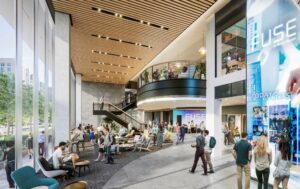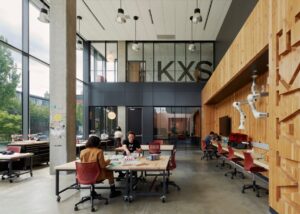Academic incubators are at the intersection of innovation and entrepreneurship. Also known as innovation hubs, they come in all shapes and sizes, spanning various industries. These hubs prepare students for future careers, foster relationships with local communities and give companies early access to potential talent, providing universities with immense business value. Universities also receive incentives to work with partners to monetize their research, gain name recognition, attract future students and remain competitive.
For an academic incubator to be successful, it’s essential to understand where the workforce is developing. Academic institutions often look to the future so that they can develop new or expand their offerings to educate and train students to meet these future demands. By elevating students to engage with business partners, incubators can attract investors and help build young companies. Not only do students benefit from incubator programming, gain entrepreneurial skills, and face new career opportunities, but business partners now have pools of future employees that have the skills and expertise they are looking for in new hires.
Design plays a significant role in the incubator’s mission by creating flexible, collaborative spaces for students and communities that foster entrepreneurial exploration and innovation. So, what do these spaces have in common?
More from UB: Alumni love their alma mater. Why not use them to win future students?
Transparency, openness, and connectivity
Unlike traditional academic buildings, incubators incorporate many different types of spaces, from conventional desks, co-working spaces and office spaces to classrooms, specialty wet and dry labs, maker spaces and more. This design offers people flexibility and control over their work and interactions with others while fostering movement and usage of the entire area. The building should be designed with

collaboration in mind, whether it’s moveable walls or common spaces that encourage students and partners to mingle and connect.
Scheduled to finish construction in 2025, The Fuse at Mason Square, does just this. Conceived as a series of vertical neighborhoods, Fuse incorporates a “Main Street” or collaboration spine on each floor with a wide pathway that encourages spontaneous connections between Mason and industry partners. The area meets educational and workplace needs by accommodating large classrooms and open and private offices.
Location, community, and programming
Location is extremely important when it applies to academic incubators, especially where the building is situated on campus and in the spatial layout of the building. An academic incubator set centrally on campus near other educational resources encourages students to use the building. Locating incubators near downtown areas or the edge of the campus gives the community access to planned activities.
Designing the interior of the building should be done with intentionality as well. For example, understanding the experience of a student and how they will use the building and interact with others should be carefully thought out. Creating strategically located collaboration spaces of all sizes with vertical connectivity will provide a highly interactive building with lots of energy.

Incubators also promote a sense of community. These buildings help create an image for a city, attracting industry partners while supporting growth and development and creating spaces where people can connect. Community engagement and pride among the incubator’s occupants are critical to success.
The Jim and Janet Sinegal Center for Science and Innovation (CSI) at Seattle University embodies the ideas of location, community and programming. On CSI’s street level, maker spaces hum with robotics and 3D printers, and classrooms serve as academic spaces during the day and activity rooms in the evening. Engineering students share ideas and have the opportunity to meet with mentors from Amazon or Microsoft in high-tech huddle rooms. The building has corporate-style spaces where teams take a hoteling approach, using available tables as workspaces and lockers for storage.
Visual energy and excitement
Design often sets the tone for a space, and academic incubators, intended to be hubs of innovation, must be unique and encapsulate the buzz and energy within. Considerations like lighting color, wall-to-wall windows that flood the building with natural light, and flexible spaces that encourage collaboration and accommodate complex project needs can make a building stand out.
The A. James Clark School of Engineering at the University of Maryland broadcasts the idea of innovation through its structure, which defies gravity by floating a solid box of flexible research space above two glass levels of student collaboration spaces. Dubbed the IDEA Factory, the building’s street-level invites onlookers to peer inside and see the energy of entrepreneurship and programming. Observers can see undergraduates sharing tools in the Rapid Prototyping Lab, preparing for design competitions in the ALE x Garage innovation workspace.

Sheathed in glass, the second floor encourages students, faculty and staff to eat lunch and mingle while exchanging thoughts in collaboration areas and conference rooms. Above these spaces, the box of research labs allows walls to be reconfigured in a snap, providing the University unprecedented ease in adapting to research demands.
Academic incubators bring innovations from concept to reality. They help make universities unique and generate excitement for existing and potential new students. They also prepare the next generation of students by connecting them with like-minded entrepreneurs and financial backers to bring their ideas to life and position them for a successful future. Designed with the collaboration of students, educators, entrepreneurs, industry partners and the community in mind, these buildings aim to inspire and become a core part of the surrounding community.







